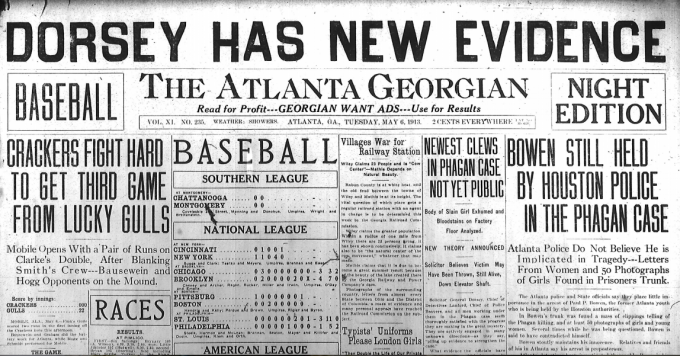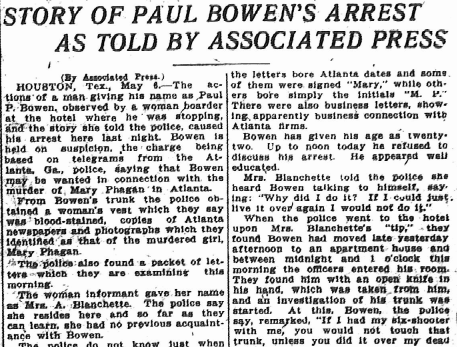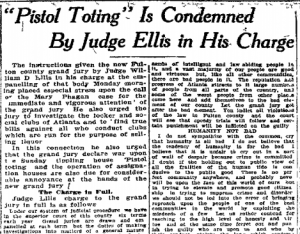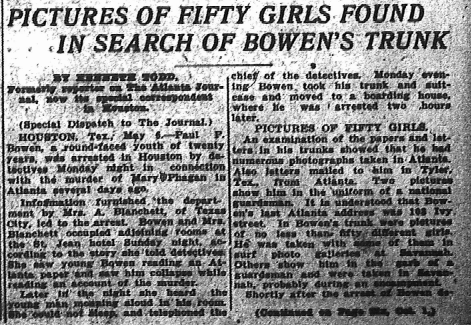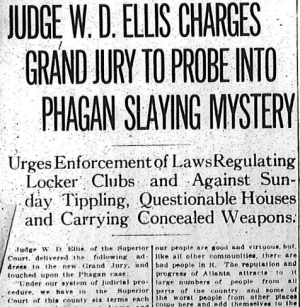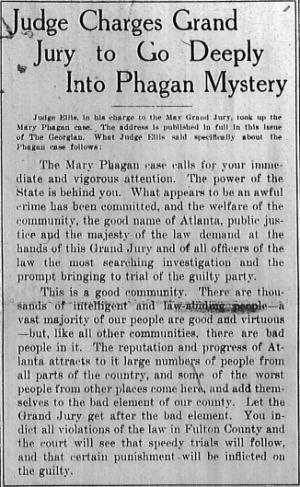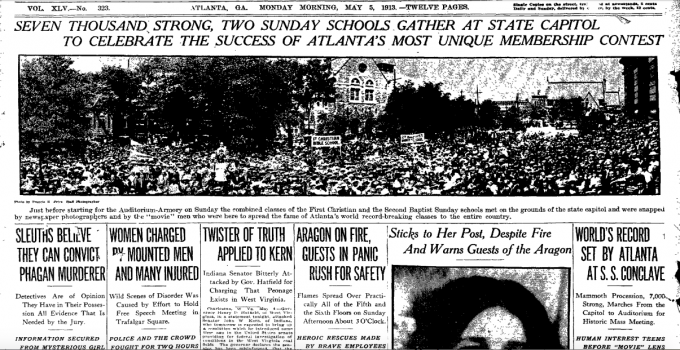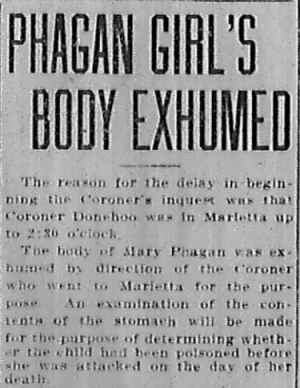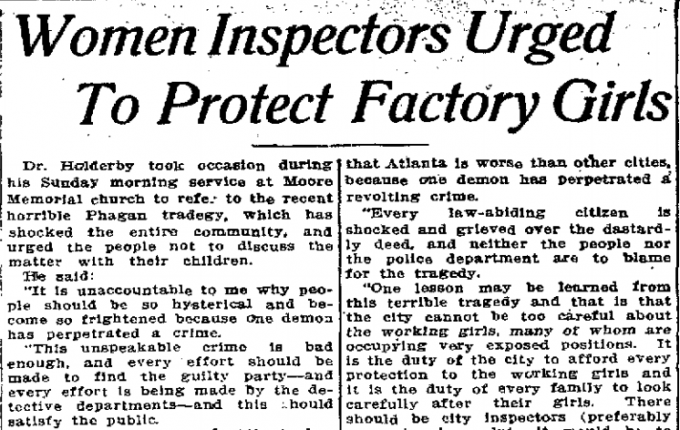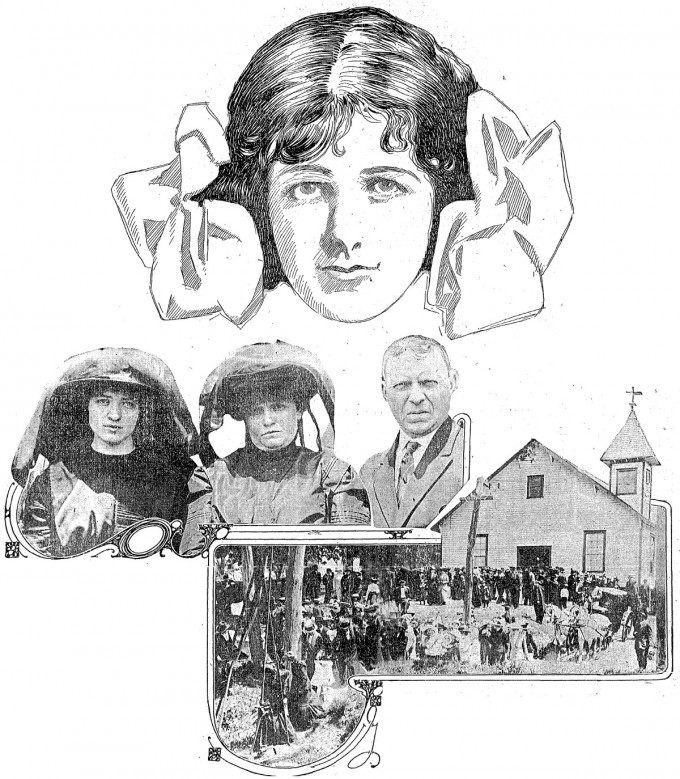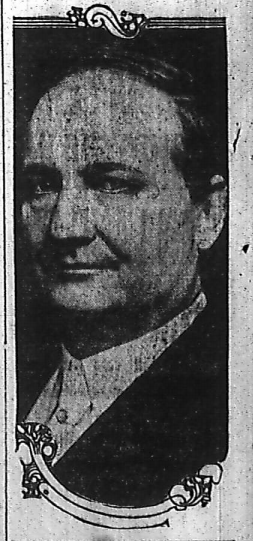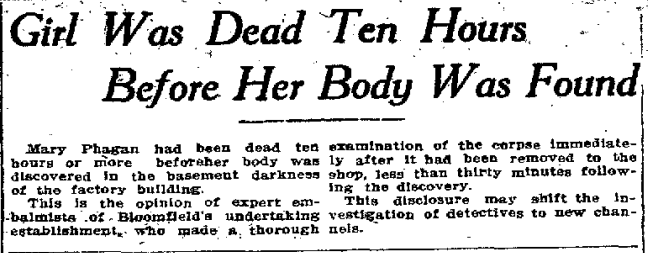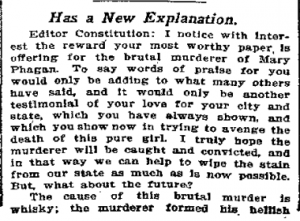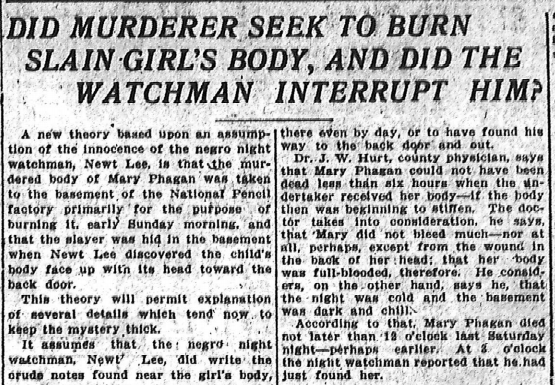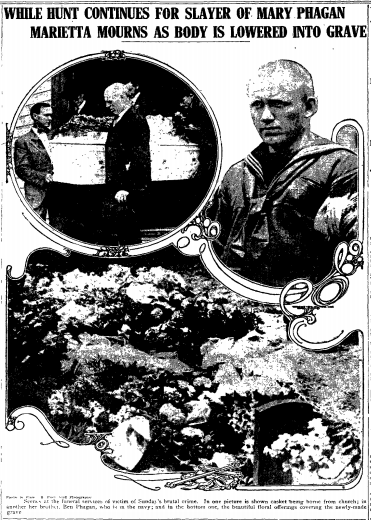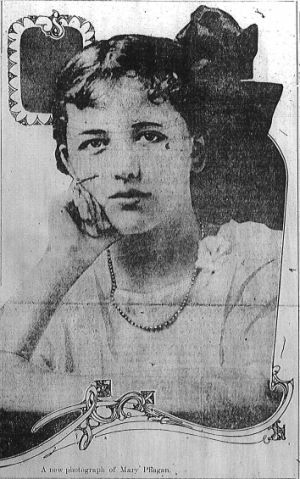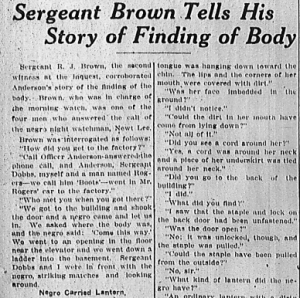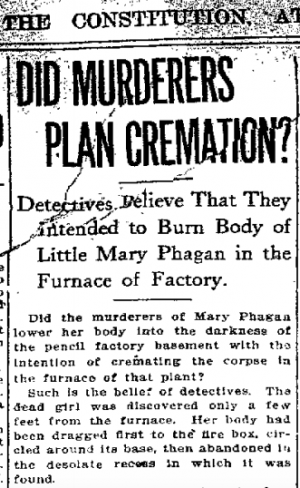Another in our series of new transcriptions of contemporary articles on the Leo Frank case.
Atlanta Georgian
Tuesday, May 6th, 1913
Atlanta Police Do Not Believe He is Implicated in Tragedy—Letters From Women and 50 Photographs of Girls Found in Prisoners Trunk.
The Atlanta police and State officials say they place little importance in the arrest of Paul P. Bowen, the former Atlanta youth who is being held by the Houston authorities.
In Bowen’s trunk was found a mass of clippings telling of the Phagan killing, and at least 50 photographs of girls and young women. Several times while he was being questioned, Bowen is said to have contradicted himself.
Bowen stoutly maintains his innocence. Relatives and friends of his in Atlanta say his arrest is preposterous.
Atlanta detectives have investigated thoroughly Bowen’s history in Atlanta and declared Tuesday afternoon that they have virtually established an alibi for him. Having satisfied themselves of the probability of Bowen’s innocence, they are continuing on their original line of investigation and have abandoned the theory that Bowen could have been involved. Continue Reading →

